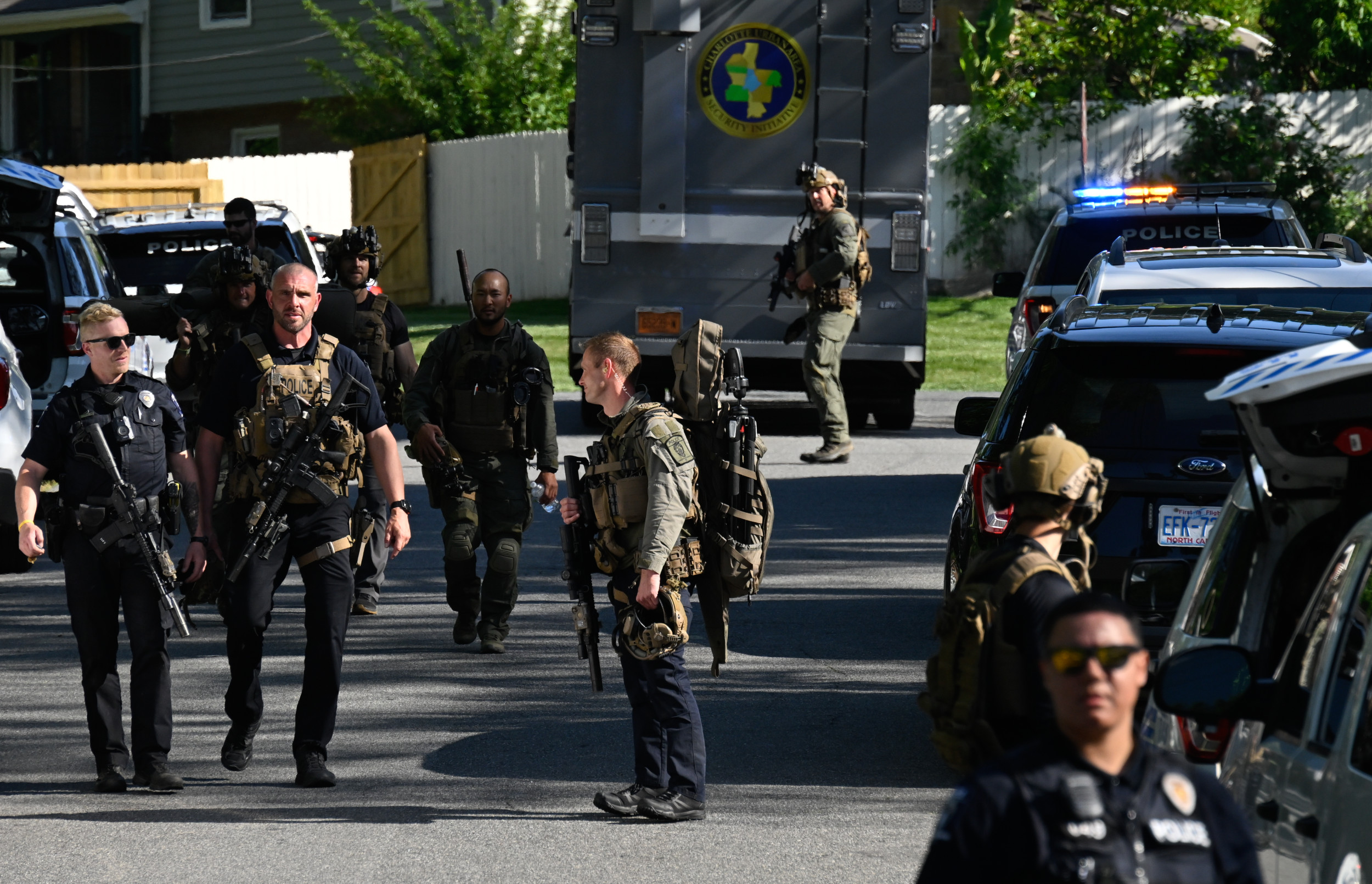The chaos after the Francis Scott Key Bridge collapse in Baltimore has been captured in images from space.
Pictures taken by the Copernicus Sentinel-2 satellites on April 14 show the scene left in the Port of Baltimore three weeks after the container ship MV Dali hit the 1.6-mile bridge, causing it to collapse.
The disaster is presumed to have claimed the lives of six people, with four bodies now having been recovered from the waters of the Patapsco River.
The images clearly show the Dali and the huge gap in the bridge's structure.

In the early hours of Tuesday March 26, the operators of the Dali sent out a mayday call, reporting a loss of power. The 985-foot-long craft then plowed into one of the supports of the bridge at a speed of 9 mph, causing much of it to collapse into the water almost instantly.
Eight construction workers were repairing potholes on the bridge at the time, and were taking a break in their cars when the ship hit, falling into the water during the collapse. Two were rescued, but the remaining six were presumed dead after several hours of searching. Only four of the workers' bodies have been recovered in the weeks since.
The name of the fourth victim has not been released, but the three others found were: 38-year-old Maynor Suazo Sandoval, 26-year-old Dorlian Castillo Cabrera, 26, and 35-year-old Alejandro Hernandez Fuentes.
National Transportation Safety Board (NTSB) Chair Jennifer Homendy has said that the NTSB's investigation into the incident will be a "massive undertaking" and could take between 12 and 24 months. However, she said that a preliminary report is expected in the next few weeks and that the agency will issue urgent safety recommendations.
It is unclear whether the satellite images will be used in crash investigations, but satellite imagery is increasingly being used to study disaster scenarios.
Examples include satellite data regarding damage caused by heavy rains and landslides as a result of Mozambique's Tropical Cyclone Idai in 2019 being used to inform the humanitarian response, and imagery in the wake of a volcanic eruption on the Caribbean island of Montserrat in 2008, showing where evacuated people could safely return home.
Several of the 56 containers containing toxic chemicals on board the Dali were breached and their contents—inlcuding corrosives, flammables and lithium-ion batteries—spilled into the harbor.
"EPA has been tracking closely, and we have emergency response personnel on the scene, working closely with the Coast Guard as the lead federal agency," an EPA spokesperson told Newsweek at the time. "EPA can say that we're not aware of any hazardous material or fuel leakage at this time and can confirm that there are no nearby drinking water intakes and therefore no threat to drinking water safety.
The largest crane on the Eastern Seaboard is now being used to lift the pieces of the broken bridge out of the river, with the heaviest section so far weighing in at about 450 tons.
Bridges don't collapse after collisions very often, but there have been several incidents over the years. According to a 2018 World Association for Waterborne Transport Infrastructure report, between 1960 and 2015, ship or barge collisions caused 35 significant bridge collapses globally, resulting in 342 fatalities. 18 of these were in the U.S.
Do you have a tip on a science story that Newsweek should be covering? Do you have a question about Baltimore Bridge? Let us know via science@newsweek.com.
Uncommon Knowledge
Newsweek is committed to challenging conventional wisdom and finding connections in the search for common ground.
Newsweek is committed to challenging conventional wisdom and finding connections in the search for common ground.
About the writer
Jess Thomson is a Newsweek Science Reporter based in London UK. Her focus is reporting on science, technology and healthcare. ... Read more
To read how Newsweek uses AI as a newsroom tool, Click here.








